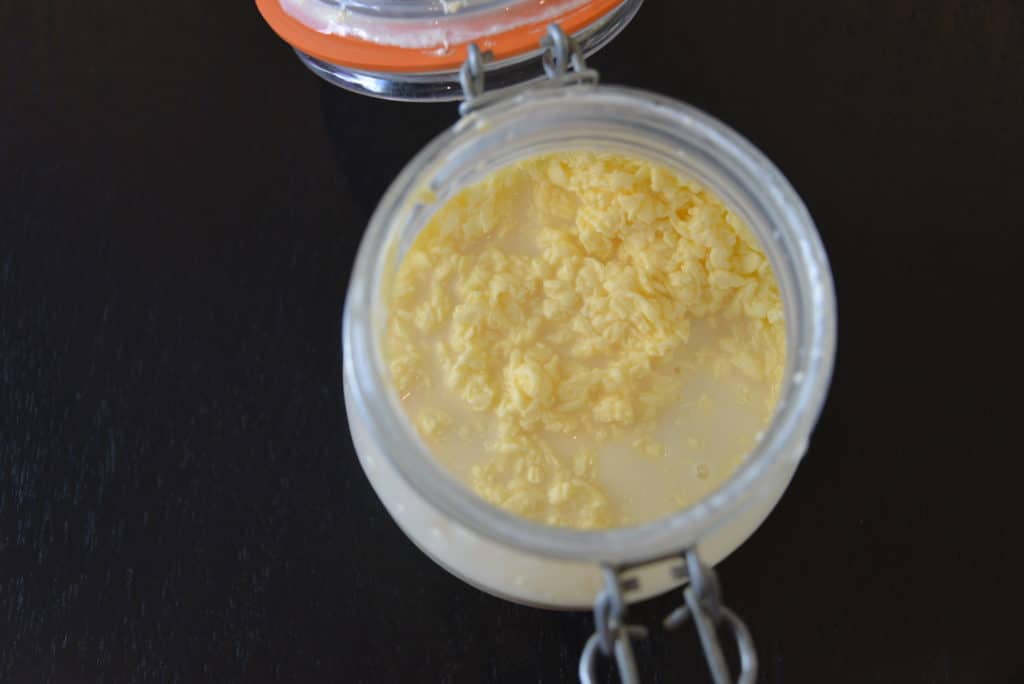Almost everything to do with food and cooking involves science. Food is stored in the refrigerator to slow the growth of microorganisms, some foods are preserved in vinegar, and others are stored in the dark. The bitterness of food and drinks can be reduced by adding salt. If you need to ripen a banana quickly, no problem: just put it in a paper bag!
Whatever the problem, there is usually a Science-Based Cooking Hack In order to solve it!
Six of the best kitchen hacks based on science
1. Extra fluffy eggs
Did you know that you can make eggs fluffier by adding a little sparkling water to them?
Add two tablespoons of carbonated water to 3 eggs and mix well. Then cook the omelet as usual.
Why does it work?
When the egg and sparkling water mixture is heated, the air in the sparkling water bubbles expands, giving you an extra light and airy omelet!
2. Cream butter
If you're out of butter but have cream, you can make butter! You just need strong arms and patience.
Place the cream in a jar with a lid. Close it tightly and shake it. After 5 to 10 minutes, you will have delicious fresh butter.

Why does this work?
Cream is a type of mixture called a colloid. It is made up of tiny fat particles dispersed in water. When cream is stirred, the fat particles stick together and form butter.
3. Store the fruit salad
Prevent a fruit salad from turning brown and wilting by topping it with fruit juice. Orange juice or a little lemon or lime juice works well.
Why does it work?
Many fruits are rich in iron; when you cut them, the inside is exposed to oxygen in the air. The iron in the fruit reacts with oxygen to give the characteristic brown color. The process is called enzymatic browningAnything that prevents the exposed fruit from coming into contact with the air will stop or slow down the reaction.
The addition of an acid lowers the pH of the fruit, which slows down enzymatic browning as it inactivates the enzyme responsible for the reaction.
4. Prevent raisins from sinking
Have you ever made a fruitcake only to find that all the raisins sink to the bottom? Raisins have an oily, slippery surface, which means they sink into the cake mixture when it starts to cook.
If you coat the raisins (or other dried fruit) in a little flour before adding them to the mixture, they will be able to grip the cake batter better and won't all sink to the bottom.
Image taken from Science to snack on
5. Ripen an avocado
We've all been there: you take an avocado out of the fridge and it's hard… what can you do?
The answer is simple: just place the hard avocado in a paper bag along with a banana or a kiwi and it will soon be soft and ready to eat.
Avocados are a climacteric Fruit. They continue to ripen after being picked. Strawberries and grapes are not climacteric. They do not ripen after being picked.
Why does this work?
Avocados slowly release ethylene gas, which causes them to ripen. The paper bag traps the ethylene gas, which speeds up the ripening of the avocado. Bananas and kiwis also release ethylene gas, so having them in the bag with the avocado speeds up the process even more.
If you want to ripen a banana, place it in a paper bag for a day too!
6. Chills a drink in 5 minutes
Need a cold drink fast? No problem. Add some salt to a bucket of ice along with ice and water, and you've got yourself a Cold drink in less than 5 minutes.
Why does this work?
Salt lowers the melting/freezing temperature of ice, which causes the temperature of the water to drop. below zero (freezing point depression). When salt is added to the ice water mixture, the ice begins to melt. Melting requires energy. Ice absorbs heat energy from its surroundings (the water and the drink) to melt. This causes both the water and the drink in it to cool down very quickly!
Know how to distinguish baking soda from baking powder
These two common kitchen ingredients can be easily mixed together. Remember that baking soda needs an acid to activate it. Baking powder starts working immediately since it contains cream of tartar, which is an acid.
More science-based kitchen hacks
Discover Why you should always salt your pasta water.
If you want your meat to be nicely browned, make sure it is dry before cooking. The meat will not brown until the water evaporates, so patting it with a kitchen towel will help the meat to brown.
When the sauce becomes too thin, mix a little cornstarch with water and stir. The sauce will soon become deliciously thick.
If you want to stop tears when cutting onions, try placing them in the freezer first or making clean, sharp cuts to reduce damage to the cells that release tear-inducing chemicals.
If you enjoyed reading my scientific kitchen hacks, you'll love my Chemistry experiments in the kitchen!
Last updated on September 24, 2023 by Emma Vanstone